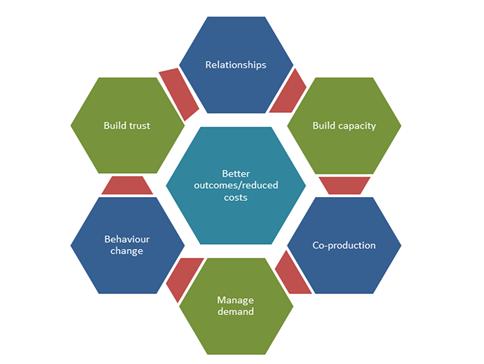Ian Briggs
In 1981, Ralf Stogdill published with Bernie Bass a taxonomy of leadership research. To scholars of leadership this Magnus opus has performed two vital functions: firstly, it has been invaluable in keeping open cathedral doors in a gale; and secondly as a work of undoubted scholarly value that it is has served to demonstrate how often confused and misplaced a great deal of leadership research in the past has been.
What is not always adequately reflected in the literature and in much of the teaching of leadership is that many of its core concepts are often based in the struggle to better understand how politicians operate. This has, at times, been lost in translation when it is applied to occupational, industrial and military settings.
Until comparatively recent times much teaching and learning of leadership as a topic has been done through trying to better understand the key characteristics of those who in history have been seen to be successful. This has led to students digesting biographies of the ‘great and the good’ – even today in military settings it is not unusual to be encouraged to read about Alexander the Great and extrapolate from his great achievements how campaigns can be led today.
It is therefore hardly surprising that we are socialised into thinking that to be an effective leader one has to be ‘charismatic’ – this is a term that is loosely banded about to describe an engaging individual who can illicit the support and followership of others. And lest we forget there is still a huge industry out there promoting these ideas, which seem to remain highly attractive to current and budding politicians.
At the forefront of our current understanding of leadership practice, we find the words ‘transactional ‘and ‘transformational’ regularly appearing. In current lingua franca, transactional is taken to mean ‘poor’ and transformational is applied to those who are seen as being effective, ‘with it’ and engaged with current trends. However, many students of political science may recognise these terms as being applied to political leaders; where transactional political leadership is …”vote for me and I will make you better off through reduced taxes” and transformational is…”vote for me and I will do my level best to create a better, fairer world”. But returning to Stogdill’s great taxonomy we can also see that leadership as an issue, a topic and as a matter of scholarly understanding is defined by having sudden leaps of understanding with longer periods of plateaus and stagnation.
I think now we are potentially at a point where that next great leap of understanding is rapidly approaching – and it may be arising from the world of current politics and wider society. Recently we have seen a senior Minister avoiding a critical leadership issue – stating that the decision whether to allow the wearing of the hijab as a clinician or nurse should be a matter for local agreement. I thinkthat should be something where a politician can demonstrate clear leadership and stand in the ground where opinion is firmly divided. Is it ducking the issue to say this is a matter for local agreement, or it is a reflection of the changing expectations we have of those who we elect to stand in this ground?
As I write this I am preparing for some sensitive work that is attempting to reconcile differences of expectation where senior politicians are giving political oversight to what are referred to as megaprojects – think aircraft carriers, HS2, locating nuclear power generation sites and the like – many of these megaprojects being right at the heart of concern for local government and local people as well as parliamentarians. But it would seem that those drawn from professional sources that operate in the role of programme and project managers are at times failing to understand the political pressures placed upon elected representatives. Politicians, too, are failing to grasp the challenges inherent in megaprojects. What is abundantly clear is that whilst some see a leadership issue at the core of such challenges, there is not one clear off the shelf leadership model that fills the gap.
It is at that crucial, pivotal point where political aspiration comes into contact with managerial competence that we need to explore a new language of leadership. Perhaps both sides of the equation are doing what they should do; politicians are articulating social aspiration and managers and professionals are applying well known, tried and trusted mechanisms of project and programme management. However, they need a ‘Babel fish’ (with due respect to Douglas Adams and that most useful of all managerial textbooks – the Hitch Hikers Guide to the Galaxy) to fully understand each other and each other’s roles.
Perhaps we need to develop a new model of leadership, one where the long term success (or otherwise) of leadership can only be judged by those who will step into the shoes of the leaders of today, a model of leadership that accepts that quick wins are just not possible and that we have to encourage leaders to think beyond the immediacy of the delivery of milestones and concentrate upon how they pass on their leadership much like we as humans do when we pass on our DNA!
But Stogdill’s taxonomy reveals that where we have enjoyed in the past great leaps forward in our understanding of leadership, it seems to have corresponded well with periods of plenty and economic growth. If we are to face another six years of austerity the question remains: from where are the resources to come from to help us capitalise upon the learning we need to engage today? It could be that when the fourth edition of this taxonomy appears we will have a new chapter that offers clear explanations of the ‘pivotal role of leaders in meeting social expectation’ drawn from how we managed to deal with complex, wicked problems of new high speed rail, aircraft carriers for the new age, new environmentally friendly towns and how we managed to generate new sources of energy. But, unless someone throws a bit of money towards us to help research this phenomena then that chapter will take a little longer to write and the current edition will continue to hold open the cathedral door in a gale.

Ian Briggs is a Senior Fellow at the Institute of Local Government Studies. He has research interests in the development and assessment of leadership, performance coaching, organisational development and change, and the establishment of shared service provision.







